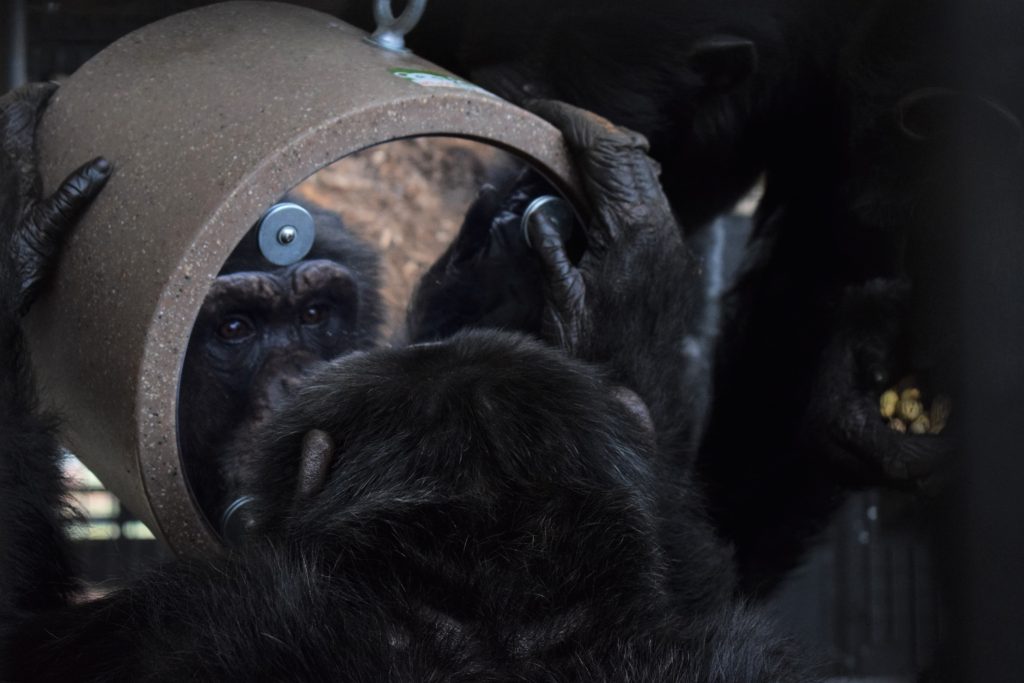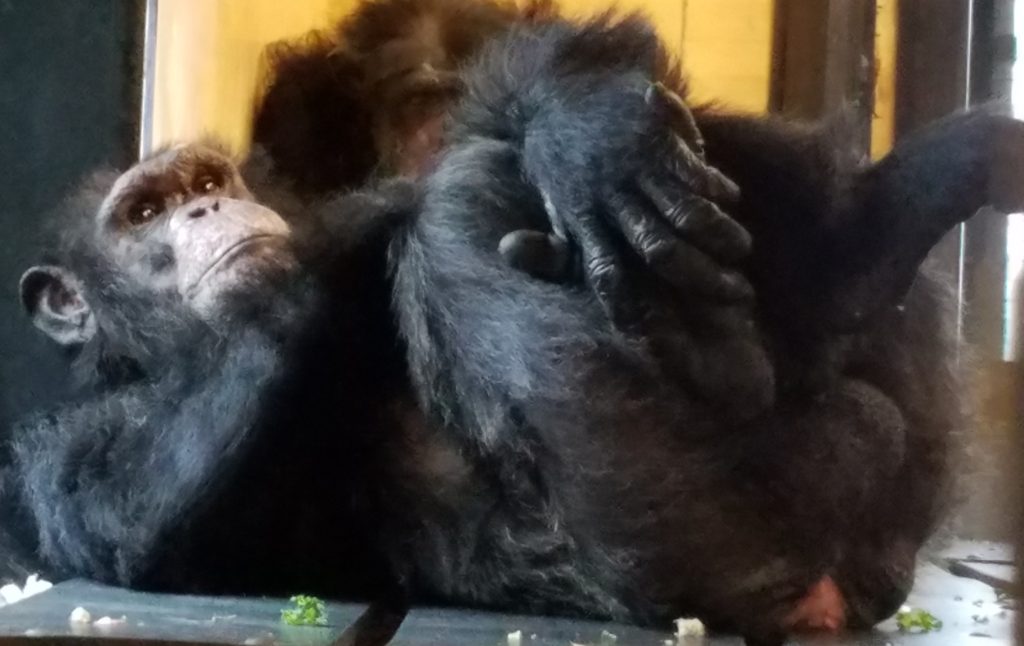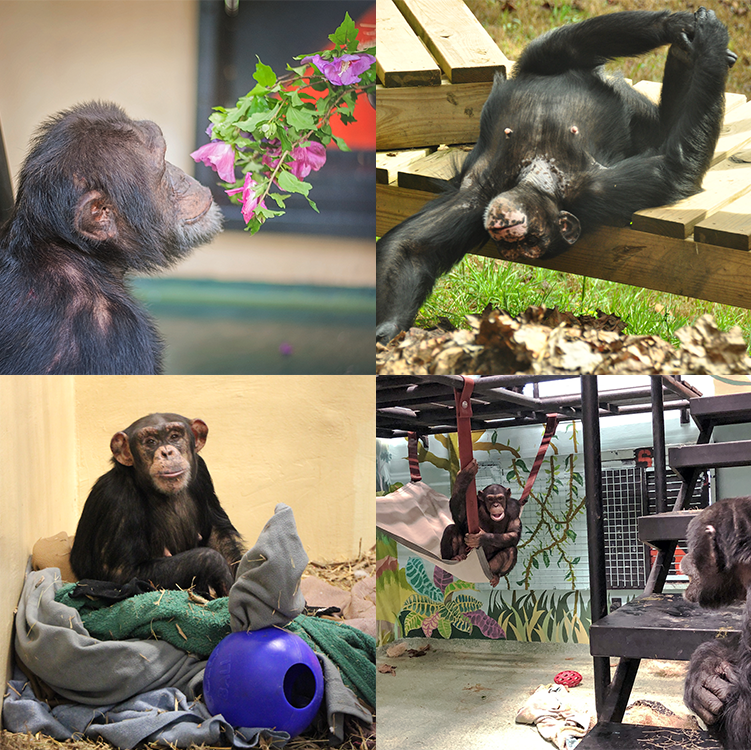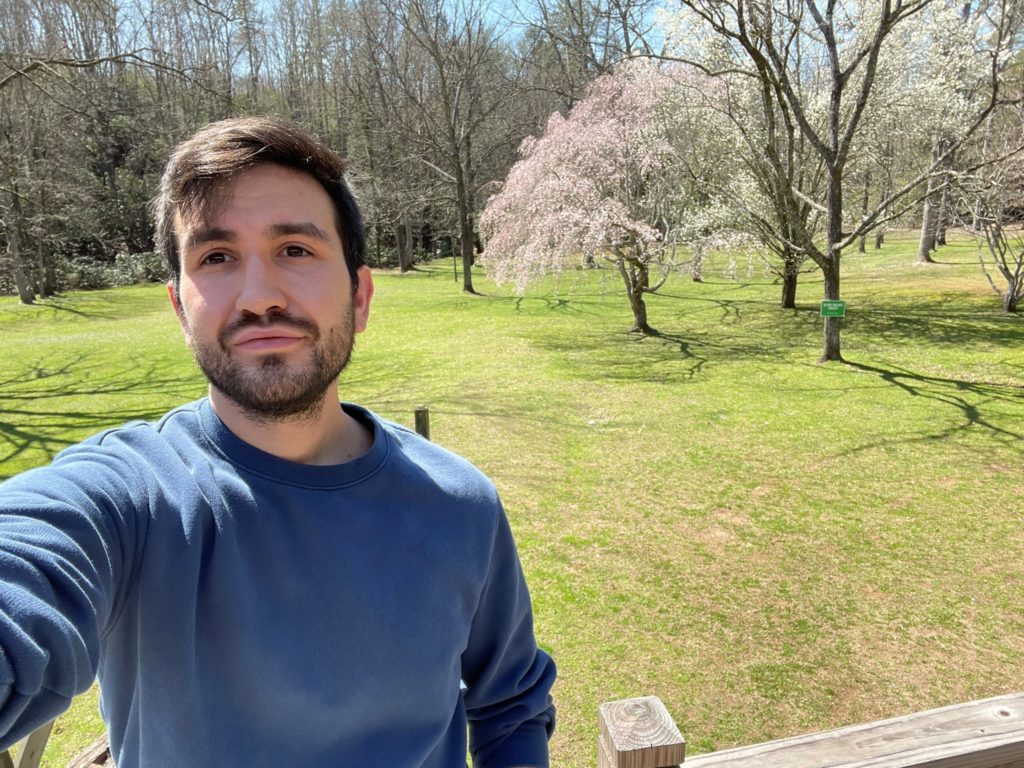
Outside Looking In: Enrichment

I’ll never forget the first time we met. Those cute freckles, squinty eyes, and cheerful personality. Or is it chimp-ality?
Neal was upfront, bouncing back and forth, while the other chimpanzees were going about their business. The caregivers were getting breakfast ready while I stood there, trying not to make any sudden movements. (They’re really quite large.)
All I remember thinking was, I hope they like me. That’s when Neal came over, sat down, and started bobbing his head as if wanting me to do something.

Maybe he wants to play? Not knowing what to do, I started bobbing my head back at him. How adorable. I think he likes me. Not five seconds later, with laserlike precision, he spits a stream of water, hitting me directly in the face.
Bullseye!
We know what we know
We all have these preconceived notions of what we think we know about chimps, myself included. It’s not our fault, really; we only know what we are taught. But trust me when I say that no carefully crafted nature documentary or Hollywood film could do them any justice.
I’ve spent the last year working towards a master’s degree in communication at Johns Hopkins University. I’ve always wanted to work for a nonprofit that advocates for animal welfare, so when I found this internship posted on the Project Chimps website, I thought, How extraordinary! A chance to work with an endangered species. How incredible would that be?
Since I was a kid, I’ve always had a special connection with animals. I was able to empathize and connect with them in a way that other people could not.
Having never learned about chimpanzees, I didn’t know much about them. I just knew was that they were strong, intelligent, and remarkably self-aware.
Enriching knowledge
Before arriving at Project Chimps for my internship, I was told I’d be focusing on enrichment. I’ll admit, at the time, I knew very little about what that meant.
(I don’t know how to enrich the life of a human, let alone a chimpanzee.)
But, as it turns out, enrichment is a fairly broad concept. The only requirements are that those activities be safe, enhance their lives, and allow them the freedom to express their normal behavior, whatever that may be.

What is – or is not – enriching?
There’s a caveat, though. Chimpanzees in captivity are raised differently than those in the wild. They enjoy certain activities that other chimpanzees have never been exposed to.
While we do not host chimps that are retired from entertainment or the pet trade, we see enrichment examples from sanctuaries that do. For example, sometimes, those retired from the film industry enjoy dressing up and putting on makeup. Although that may sound odd, they were raised to think certain activities are fun. Similar to human children, chimpanzees like to mimic the people around them.
Having said that, the caregivers at Project Chimps don’t give the chimpanzees makeup. Although they’re brilliant, having never played with makeup, they’d probably just eat it. (Having eaten a tube of Chapstick myself, I can relate—I was seven, and it smelled like vanilla frosting.)
My project
For the past two months, I’ve had the privilege of spending twelve hours a week observing the chimpanzees and helping the caregivers serve breakfast and dinner. I spent much of my time learning about the importance of enrichment and the different ways chimpanzees benefit from various types of stimulation, just as humans do.
The rest of my time was spent creating new web pages for YOU to explore. Learn about how we enrich the lives of chimpanzees by clicking here. I hope you enjoy!
As for Neal? He still spits at me, and I’ve learned to duck and cover. I guess it’s socially enriching for both of us.

Paulino Cardoso is a 2021 Communications Intern
